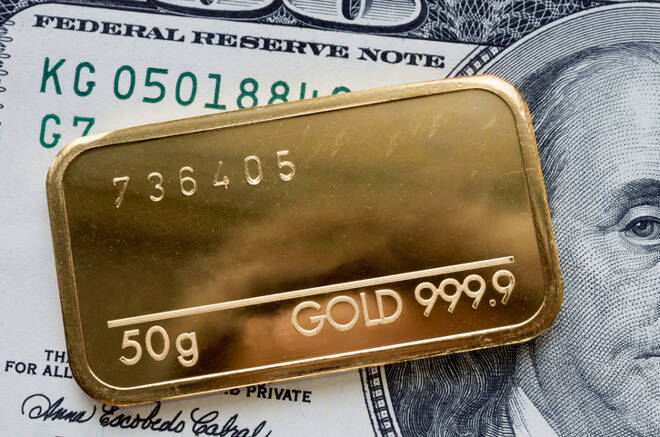Advertisement
Advertisement
Price of Gold Fundamental Daily Forecast – Strong US Economic Data Pressures Gold Prices
By:
There are some periods when gold doesn’t follow the U.S. Dollar, but gold’s negative correlation with Treasury yields is pretty reliable.
Gold futures closed lower on Friday, helping to erase all of its weekly gains, preventing a third straight week of advances. The U.S. Dollar Index fell, but this didn’t help gold prices. Gold was pressured by firm Treasury yields in reaction to solid U.S. economic data.
On Friday, June Comex gold futures settled at $1777.80, down 4.20 or -0.24%.
We know that gold is a dollar-denominated assets and tends to rise when the U.S. Dollar weakens, but in this case, the dollar index was being pressured by a stronger Euro. The dollar itself wasn’t weaker. The Euro got an extra late-day lift following an earlier boost from an upbeat survey of purchasing managers. The U.S. Dollar was actually supported by strong manufacturing PMI data, but not to the extent of the Euro’s support.
Strong Economic Data Out of US and Europe
Markit’s preliminary U.S. manufacturing purchasing manager’s index for April came in at 60.6, slightly ahead of estimates from economists surveyed by Dow Jones. The composite came in at 62.2. The readings for manufacturing, services and the composite index were all at a record high for Markit’s flash series.
The Euro Zone’s recovery from its pandemic-induced economic downturn was much stronger than expected in April as the service industry adapted to lockdowns and made a surprise return to growth, a survey showed.
IHS Markit’s flash Composite Purchasing Manager’s Index, seen as a good guide to economic health, rose to a nine month high of 53.7 from March’s 53.2, confounding expectations in a Reuters poll for a dip to 52.8. Anything above 50 indicates growth.
Both sets of data indicate a strengthening global. The jump in the numbers out of Europe was particularly encouraging.
With Europe facing a fresh wave of coronavirus infections governments have reimposed strict curbs to contain the spread, forcing some businesses to close and encouraging citizens to stay home. That meant the economy was expected to recover at a much weaker rate this quarter than had been expected only a month previously, according to a Reuters poll the prior week. Instead, the data came out surprisingly strong.
Treasury Yields Firm
Trying to trade gold by following the dollar proved to be a difficult task on Friday. However, we already know that Treasury yields exert the biggest influence on gold prices. Gold correlation with the U.S. Dollar is not airtight. There are some periods when gold doesn’t follow the U.S. Dollar, but gold’s negative correlation with Treasury yields is pretty reliable.
Yields firmed on the stronger-than-expected U.S. economic data. This is what made gold a less-attractive investment. When you trade gold at this time, you always have to be asking, “Is the economic data bringing the Fed closer to tightening policy, or farther apart?” Tightening policy, whether it be reducing its bond purchases or raising rate, is a negative for gold prices.
For a look at all of today’s economic events, check out our economic calendar.
About the Author
James Hyerczykauthor
James Hyerczyk is a U.S. based seasoned technical analyst and educator with over 40 years of experience in market analysis and trading, specializing in chart patterns and price movement. He is the author of two books on technical analysis and has a background in both futures and stock markets.
Advertisement
